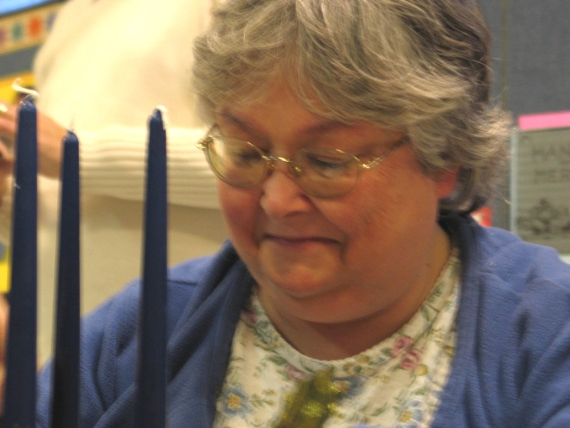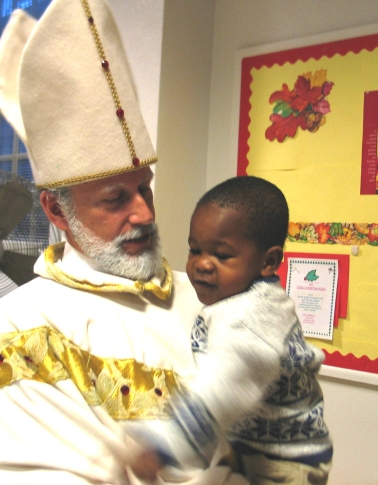
St. Nick's Sunday 2006
by Cliff Lamere 16 Mar 2010

This photo of Mary Bon was taken December 3, 2006 by Bette Jane Saiberlich-Poulos. Two days prior to St. Nick's Sunday, craft tables were set up so people could make wreaths, candle holders, etc. Mary was at one of the tables.
A Little History
St. Nicholas Day is celebrated on December 6 by the Greek Orthodox Church. Advent contains four Sundays, the first of which is sometimes referred to as St. Nick Sunday. On the first Sunday, one candle is lit. On the second Sunday, two candles are lit. Three candles, then four, are lit on the following two Sundays.
St. Nicholas (280-342 A.D.) was a wealthy man (perhaps a nobleman or bishop) who helped poor children, unmarried girls, sailors, and other people. He became associated with gift giving. In one tradition, he gave three bags of gold to the father of three girls who could not afford a dowry for them. This would have caused them to remain unmarried. Without any other means of employment, they would have been forced to become prostitutes. St. Nicholas saved them from that fate.
The three gold balls that symbolize a pawn shop represent those three bags of gold.
Honoring St. Nicholas flourished in the 4th century in Asia Minor. It spread to Protestant European countries, but after the Reformation this practice disappeared in all but Holland where St. Nicholas was called Sinterklaas (Sinter = Saint; Klaas = Nicholas). Dutch colonists brought the tradition to New Amsterdam (now New York City) and Beverwyck (now Albany). English-speaking Americans changed his name to Santa Claus.
_____________________________________________________________________________
At First Church, on St. Nick Sunday, Rev. John Paarlberg meets in the afternoon with children and their parents. He dresses as St. Nicholas and relates the story of his significance. Afterward, he passes out small gifts.

Photo by Bette Jane Saiberlich-Poulos
Visitors since 18
Mar 2010